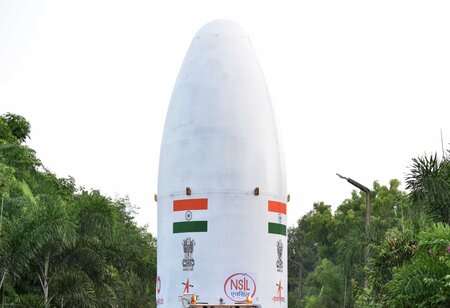By Consultants Review Team
 The Indian Space Research Organisation (ISRO) is preparing for the upcoming launch of the advanced meteorological satellite, INSAT-3DS, slated for February 17, 2024, from the Satish Dhawan Space Centre in Sriharikota, riding atop the GSLV-F14 rocket. This event marks a significant milestone in India's space pursuits.
The Indian Space Research Organisation (ISRO) is preparing for the upcoming launch of the advanced meteorological satellite, INSAT-3DS, slated for February 17, 2024, from the Satish Dhawan Space Centre in Sriharikota, riding atop the GSLV-F14 rocket. This event marks a significant milestone in India's space pursuits.
Designed to augment the capabilities of the existing INSAT system, INSAT-3DS will ensure the continuity of services provided by the in-orbit INSAT-3D and 3DR satellites. Having been dispatched to the SDSC-SHAR on January 25, 2024, for integration with the launch vehicle, the satellite is poised to enhance weather forecasting, disaster management, and related meteorological services.
The geostationary orbit at an altitude of approximately 35,786 kilometers and a longitude of 82 degrees East will be the new home for INSAT-3DS. It is equipped with sophisticated meteorological instruments, including a six-channel Imager and an Infrared Sounder, crucial for monitoring weather patterns, cyclone detection, and communication during natural disasters.
Part of the Indian National Satellite System (INSAT) series, initiated with INSAT-1B in 1983, the INSAT-3DS mission represents a continued effort to revolutionize India's communication sector. The INSAT series serves diverse purposes, including communication, broadcasting, and meteorology, benefiting India and its neighboring regions.
ISRO's latest venture is expected to significantly contribute to the nation's meteorological imaging and data relay capabilities. The launch window for the GSLV-F14 mission spans from February 17 to March 17, as indicated by the latest Notice to Air Missions (NOTAM) issued by ISRO. This mission underscores India's commitment to advancing its infrastructure for weather monitoring and disaster preparedness, further solidifying the country's status as a global leader in space technology applications for societal welfare. As the countdown to the launch progresses, all eyes are on Sriharikota, anticipating another successful chapter in ISRO's legacy of pioneering space missions.
We use cookies to ensure you get the best experience on our website. Read more...